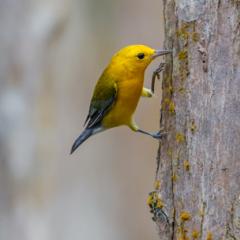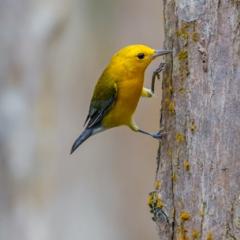About Heather's Work
Heather previously held a position with the Carnegie Museum of Natural History as the Assistant Director of Science and research where she managed and facilitated programs related to science, research, and collections. Heather recently worked for The Nature Conservancy in South Carolina as the Conservation Coordinator managing the conservation easements held by SC TNC and helps facilitate local conservation efforts. Heather also worked with landowners to help them make good land management decisions from coastal South Carolina to the Southern Blue Ridge Mountains.
Heather also helped with the strategic planning for the state chapter. Heather received a Switzer Leadership grant in 2016 to work with Audubon South Carolina as a Program Manager of Sustainable Solutions. As a program manager, Heather aimed to create a Bird-Friendly, Climate Resilient South Carolina through educational outreach, the creation of recognition programs, restoring native plants in backyards and communal spaces, and changing policy.
Heather also worked as an Assistant Specialist with the University of California, Riverside's Center for Conservation Biology developing habitat suitability models for a broad array of species being conserved as part of the Western Riverside Multiple Species Habitat Conservation Plan. One of her main projects focused on understanding how past geographic range shifts of the California gnatcatcher related to urbanization and climate change.
Heather received her PhD at the University of California, Riverside (UCR) in Kurt Anderson’s lab. Her dissertation research along with additional projects with the Center for Conservation Biology at UCR and Joshua Tree National Park has focused on understanding how species respond to anthropogenic disturbances and environmental stressors across three different ecosystems within southern California from both restoration and management perspectives. Her research has focused on a variety of species, including plants, invertebrates, mammals, and birds across multiple habitats with various environmental stressors in order to provide a more holistic view of environmental change.


